James Grant 1720-1806
General James Grant, Laird of Ballindalloch
Page under construction
In constructing this mini-biography I am particularly grateful to the University of Florida for permission to quote extensively from their website, Florida History Online. and also to Guy and Victoria Macpherson-Grant for their kind interest and encouragement. Nevertheless, the opinions tentatively expressed in this mini-biography are mine and should not be imputed to them.
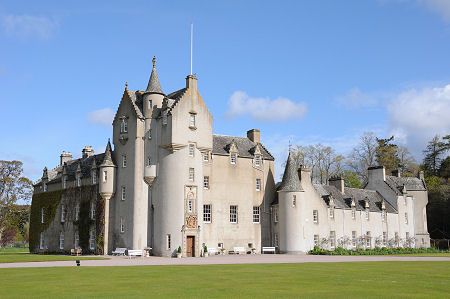
This photograph of Ballindalloch Castle shows clearly the original fortified tower house that James would have known in his childhood and the later wings that were added. At the confluence of the A'an and the Spey it is one of the best-loved visitor attractions in the area. It is also a family home and the centre of a thriving business enterprise. Photo: Undiscovered Scotland
The online guide to the Castle tells us, with tongue in cheek.
“Beneath the stone floors of the original 16th Century Castle there lies a dungeon. Here, where once the enemies of the clan Grant would reside, these past three centuries the wine has been kept. It was once the favourite room of General James Grant, whose ghost is said to walk the corridors of Ballindalloch Castle by night, his spectral journey a vain attempt to rediscover his beloved cellar.”
In Scotland General James is remembered as an 18th century bon vivant, carrying all before him, and a professional army officer. He was caricatured merrily by John Kay amongst his "Edinburgh Worthies" and painted, finely, by Alan Ramsay.
In American popular history he also looms large but as a pompous arch-enemy in the struggle for American independence from Britain.
James's history is much more complex than these opposing views would suggest.
Yet this mini-biography can still only cover very limited aspects of his life.

One of John Kay's portraits of General James Grant which had been hand coloured.

Alan Ramsay's fine portrait of James Grant. Although the buttons on his waiscoat are under tension, in the pose of the body and by the use of strong shadows, Ramsay was much kinder to James's embonpoint. I do not know the city that James is indicating and cannot make a guess because there is no date to the portrait that I have been able to find.
The Early Years
James Grant was born in Ballindalloch Castle to Colonel William Grant and Anne Grant in 1720. His grandparents were James Grant of Rothiemurchus and his wife Grizel Macintosh, and Ludovick Grant of Grant whose wife was Janet Brodie. He would seem, therefore, to have had a very soft landing when he came into the world.
However, raw pedigree data often conceals more than it reveals.
James’s father had only just taken over the estate from (his cousin ?) John Roy Grant who had neglected it badly as he had fallen into ever greater debts.
John Roy would eventually be reduced to the single property of Phonas in Inveravon. This may explain why Alexander of Hillockhead, thought to be one of his sons, was struggling on an even smaller hill farm on the Elchies' estate.
It would be seven years after James’s birth when the charter of resignation of Ballindalloch finally came into his father's hands. Six years after that, in May 1733, Colonel William died. His wife, Anne, had died the year before. James was 13 years old. His brother Sandie, the new laird, wanted to follow the family tradition of military service leaving the management of the estate to Robert Grant in nearby Tammore.
There seems to have been very little attention given to the emotional needs of young children at the time. Parents, who could afford help, rarely concerned themselves overmuch with the children's upbringing directly. Hence, perhaps, the importance to these children of the Ballindalloch factor, Robert Grant of Tammore and his wife, Margaret Cumming.
James and his young sisters were placed in the care of a young woman who had "all the right qualities for the job" except that she was a Roman Catholic. These Grants were convinced Protestants and already firm supporters of the Hanoverians. They were busy cultivating the right government connections. So they were obviously nervous of appearing to offer a home to someone who could be suspected of being a Jacobite spy.
It was soon decided that young Jamie should move to his relatives in Edinburgh for proper schooling.
Edinburgh
Young James arrived in Edinburgh at a very exciting time when it was described as “a hotbed of genius”.
His mentor was Patrick Grant from Easter Elchies, a distinguished Lord of Session.
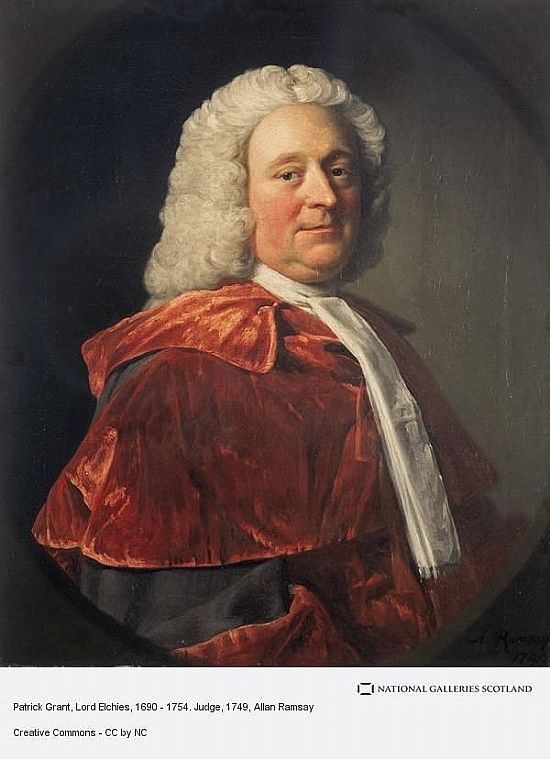
The legal establishment had moved into the old Scottish Parliament buildings after 1707 when the Scottish and English Parliaments were united at Westminster. They had also taken on much of the management of affairs in Scotland and their judgements were, therefore, not always apolitical.
Lord Elchies had become a trusted supporter of Campbell of Argyle, the Lord Justice General. Along with Lord Kilchurn these three judges chose the 15 jurors who would try James Stewart of the Glen for the murder of Colin Campbell, in what became known as “The Appin Murder Trial”. Out of the 15 jurors chosen 11 bore the name of Campbell. Though the evidence showed that James Stewart was innocent he was condemned and hanged. His body was deliberately left hanging as long as possible beside the busy Ballahulish ferry as a "warning".
This "justice" was a lethal mix of an old clan feud and the new Hanoverian policy of eliminating and terrorising any opposition. The case is still recognised as one of Scotland’s most blatant miscarriages of justice. It provides the underlying plot of Stevenson's Kidnapped.
James, dutifully, began training for the law at the “Toun’s College” i.e. Edinburgh University.
Six years into his training. however, he decided he would prefer to win battles rather than arguments. He asked to follow his older brother into the army as a career soldier. Lord Elchies generously agreed.
By this time Sandie, as the Laird of Ballindalloch, was married to Penuel the daughter of Sir James Grant of Grant. They also had a young son, named after Alexander and James’s father, William.
The new Ballindalloch pedigree seemed secure and James believed himself to be unlikely to inherit the estate. With the help of his brother James was, therefore, commissioned as an ensign with the Royal Scots in 1741.

James’s travels abroad began.
The military career of James Grant is fairly well covered in easily accessible accounts of his life online. I propose, merely, to list some of his military exploits and to concentrate on his work in East Florida as Governor and promoter of commerce and social life. This can, still, only be a very inadequate introduction.
A Chronology of James’ military career. Part 1
1741 Commisssioned ensign: Royal Scots Regiment
1744 Promoted Captain whilst serving in Flanders
1745 - 1748 Aide de camp to James St Clair
1757 Promoted to major in the newly formed First Hghland Regiment commanded by Archibald Montgomery. Travelled with this regiment to South Carolina.
1758 Was defeated and captured by the French Army at Fort Dusquesne in Pennsylvania
1760-1761 Second in command in the campaign against the Cherokee Indians
1762 Promoted to temporary rank of colonel, 40th Regiment. Took part in the seige of Havana.
1762 Was appointed Lieutenant Governor of Havana, Cuba .
This information comes from the Library of Congress biographical notes to the Ballindalloch Papers. Paul Nelson in his full biography says that Grant arrived too late to take part in the siege but he confirms the appointment without any fruther details.
Perhaps the appointment in Havana may be why the Alan Ramsay portrait of James echoes that of Joshua Reynolds’ pose for Albermarle pointing to Havana. Albermarle became the astute Governor of Havana for the one year that Britain actually held the port.
As early as 1741, Charles Knowles, Admiral of the Fleet and later a governor of Jamaica had suggested taking Havana in order to “command the whole West-Indies, and I may venture to add, carry on what trade we pleased to every post in it”.
Amongst the independent traders who immediately took advantage of the "British interlude" in Havana were Alexander Grant, Dalvey and Robert Grant, Hillockhead (later of W. Elchies). They are listed prominently amongst the merchants lobbying the Earl of Halifax for a return of their property after the town was returned to the Spanish under the 1763 Treaty of Paris. (There were three Treaties of Paris which can be confusing)
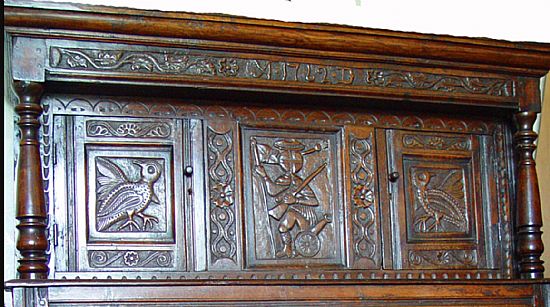

A website called “Falling Angels, Lost Highways” has posted these images of a carved court cupboard which, the owner believes, commemorates James Grant’s involvement in Havana. It is dated 1762 and appears to show a Scottish soldier of a foot regiment (the sole of a foot imposed on the saltire) fighting now for St George whose flag is superimposed on a globe which has replaced the head. There is no account of its provenance. Even though it may not be a celebration of James Grant's role in the battle it is an interesting piece that shows how the Scots involvement in this victory was seen as worthy of being kept at eye level. Its curious ambiguity allows for mutliple interpretations. Photos: David Moffat
Some of the same merchants who had rushed into Havana turned their attentions to the Forida plantation scheme when James Grant was appointed the Governor of East Florida in 1763.
This was undoubtedly the appointment that most suited James’s style of hospitable management best. It is also the one for which we have most evidence online because of the work of the Florida History Online group in Florida University.
Governor of East Florida 1763 -1773
The first Scottish presbyterian Church in London was built in Crown Court, Covent Garden. It was well placed for the Scottish merchants who gathered there. The even grander Pont Street Church followed as more Scots moved to the capital for work or for “the season”.
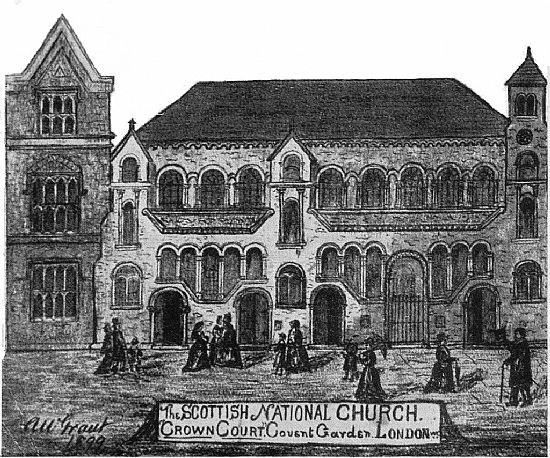
Covent Garden was not only a centre for Scots religious meetings, however. It was a hub round which business and pleasure swirled in a heady mix.
John Rich would often call in at The Shakespeare’s Head tavern between perfomances of “The Beggar’s Opera” at Drury Lane. Perhaps this was how Robert decided he could get away with being in a Macheath situation of “being happy with either” of his partners but wanted to be officially married to neither.
This same tavern also hosted a number of men’s clubs for hard drinking and “wenching” but also for serious discussion. These included “The Owls” who simply prided themselves on drinking all through the night. For our present interests, however, the important club to meet monthly under Shakespeare’s Head was “The East Florida Society of London”. "The Freemason's Club" also met close by and men were often members of several of these fraternities.
The members of the East Florida Society always drank the health of Governor James Grant immediately after that of the king. Its main aim was to lobby Parliament for grants of land in Florida. As in Nova Scotia, this was often simply a matter of the prestige of ownership of vast acres rather than any concern to settle and develop the country. For some, however, there were high hopes of making a fortune from sugar and rice production. Amongst the members who were alloted 20,000 acres each were Alexander Grant Dalvey, Richard Oswald (one of Dalvey’s trading partners) and Lord Adam Gordon. They also included the Duke of Buccleuch, Earl Cassilis and a number of other Lords and members of government and their families.
Lord Adam Gordon had become an enthusiast for East Florida during a visit to St Augustine when he stayed with the recently installed Governor.
James Grant was just six years older than Gordon and, of course, the two shared much common heritage (including disputes about their estate boundaries) in Strathspey. Gordon was also a gifted watercolourist and a keen observer in his travels as well as a disciplined military man. In his sketch book, now in the British Library, is this water-colour of his host’s house in East Florida.
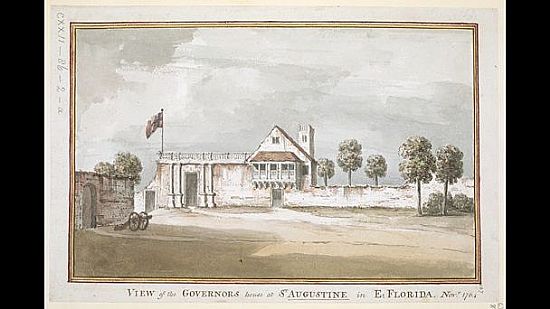
The house had wide views both towards the sea and inland with a crow's nest look-out tower.
The aims of the proposed settlement of the London group were clearly set out. Only Protestant, white, skilled people could apply for tenancies. (The Spanish population had largely moved to Cuba when the British took over.) The servant class was to be easily distinguishable by their skin colour and would be imported, as necessary, from South Carolina rather than directly from Africa.
The dream was of a well-served, profitable lifestyle in the sun shared with like-minded people.
We may see it now as racist, patriarchal, patronising and hypocritically respectable. But all that is hindsight. These would-be settlers were convinced they were pioneering “improvers” of both land and community.
Much of the vast acreage of land turned out to be brakish swamp, the climate also included fierce tropical storms and late frosts. People were often isolated because of a lack of infrastructure. The Atlantic coastline provided few natural harbours, and there were few towns to offer the chance of the kind of public display that “Society” required to affirm its existence.
James actually tackled all these “problems” early, increasing road building, calling in competent surveyors, setting an example in his own plantation and above all creating a centre for socializing through his personally lavish hospitality.
He set up two plantations one for rice and the other which, in the end proved more profitable, for indigo.
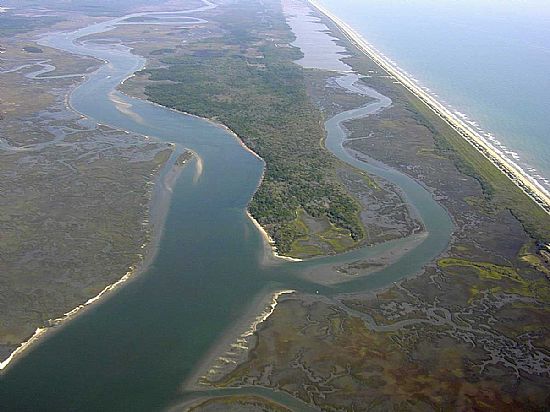
This aerial photograph of what is now a national park, shows the site that General James chose for his indigo plantation. It lies between two slow moving rivers and with no other natural protection from the Atlantic weather systems. It is six miles north of St Augustine. Cultivation began in the south and involved clearing more trees between each indigo harvest. The indigo was also processed on the estate before being exported so slaves worked hard all year round.
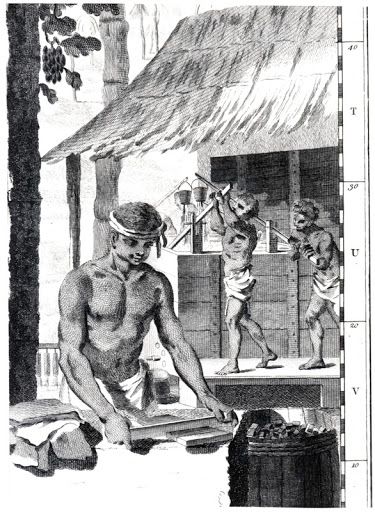
Drawing of slaves in South Carolina preparing small ingots of “blue gold” . The precious chunks of the dye that were the result are only about 2cm long. The methodoly of production in South Carolina was followed closely by James Grant in Florida. It involved a great deal of labour both in growing the large quantities of weed required and also in the skilled processes of creating these dye blocks. It was also unhealthy labour during the processing because of the pungent smell.
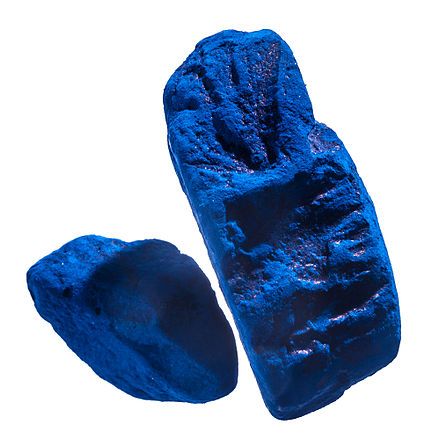
When his nephew William died James needed to return to Speyside as laird of Ballindalloch. Dr David Yeats, the Secretary of the East Florida Colony he chose as his acting deputy. Alexander Skinner, from South Carolina, he placed in charge of his indigo plantation. Both men proved themselves to be highly competent and trustworthy. The country developed slowly and James’s estate eventually became highly profitable.
Some extracts from letters sent by these two agents to General James have been placed online by "Florida History Online". A small selection follow here.
Peg and Sue were valued housemaids for Grant in his villa. The Governor who replaced Grant treated them very badly. Their extraordinary story comes through in some of the letters chosen by the group, though it cannot be followed fully in these few selected letters.
Two boys called Francis and Baptiste returned with Grant to Scotland. Baptiste became celebrated as James's highly capable chef.
What did the locals who staffed the kitchens and kitchen gardens think of the African slave chef who was now their boss I wonder? How did Baptiste behave towards them? There is so much we would like to know about this arrangement. It is clear that James, himself, was determined to underpin Baptiste’s status in that he added a whole new wing to the castle to accommodate Baptiste and his catering establishment.
What happened to Francis I have not been able to establish nor where either of them is buried or memorialised.
Whether or not they were his sons is definitely not clear from my limited research but Grant’s concern for the fate of the two women seems to indicate that as a possibility. The reference to the remaining group of Alexander, Peg and Sue would also point to them as being his family. Alexander was another son perhaps.
Paul Nelson certainly claims that his contemporaries believed Grant to have been sexually active even though he never married.
Skinner to Grant, St. Augustine, 15 June 1771:
I take the opportunity of a sloop bound for Charles Town to let your Excellency know how we go on the plantation. Since your departure we have had no rain except a few light showers at the end of last month when we were obliged to replant in many places, some of which have not yet come up. A good deal of what had been previously planted was destroyed by the dry blowing weather. The South point has a good appearance and some places in the North and the Negro fields look tolerable. Our plow lands have stood out the worst. The little which has withstood the drought looks healthy and strong except in the old field by the Negro houses and that will produce nothing but pursley. It was replanted the 9th and 10th of May but has come to nothing and I shall plant it with peas if we have not had rains very soon.
The potatoes look very well, the corn is bad, among which we planted peas and must plant as many more as we can in the spare ground for our chief dependence for provisions must rest on the old. The indigo oats are all ready and I intend to begin to cut about the end of the month. But I am much afraid we shall not have the quantity of the indigo I expected.
Pool the carpenter has been detained in town beyond his time by a boat he had to finish, but he has now begun upon our flat and it should be ready in good time.
I received by Mr. Yeats on his return from Charles Town the broker's opinion of samples of your indigo and Mr. Richard Oswald's sent to London by John Gordon. And of a sample of Spanish flora marked from 10-12 shillings a pound, and as with respect to your indigo I am convinced the broker is no judge for I have compared the best of the sample of Spanish flora with some of our indigo and it is not inferior in quality; though it does not appear so well to the eye at first since it is not done up in the flora way.
Skinner to Grant, St. Augustine, 30 Dec 1772:
Frost broke us up on 4th of this month, causing some damage to our third cutting. Next year I plan to push for 4000 weight.
We have 120 acres of new land now cut down on the Guana Ridge extending near to a mile and a half along the River. This will keep all hands busy till near planting time....
The Negroes on the plantation are at present strong and fat to which the new boat does not a little contribute as Captain Wallace takes frequently a sail over the bar and catches bass in abundance. Forty-three large fish were carried to the plantation on Christmas eve, about thirty weight each, which with the carcass of beef sent the next day was no bad cheer on that occasion.
I should be glad if you would order around on the first vessel bound for this place four pieces of strong duffels as Mr. Paine's blankets were but indifferent and very dear. We stand in some need of a supply which at present we will choose to make it over the winter. [Mr. Paine's clothing, especially the breeches, are inferior] and the Negroes must have something on their legs in the winter.
Once before I wrote to you that a few more wenches would be necessary on the plantation. I now beg leave to remind you of it. The proportion of the women is certainly too small for the men and this I take the be the cause of their not breeding. But there is another evil that arises from it that is every day increasing. Viz. [That is that] the boys are now grown to men and they with the other old Negroes who have no wives make free with the married women. The husbands find them out and quarrels ensue. Robin was sometime ago near to having his skull split by a stroke of a hoe he received from Toby on this account, besides many other quarrels of a like nature which frequently happen.
Skinner to Grant, The Villa, 17 April 1773:
I received your letter and am pleased that you are satisfied with the way I am running the plantation. We finished the first planting two days ago and have yet an additional quantity of land in culture this year by 150 acres on the Guana planted with indigo only. This is a great deal of land to tend but we can do it, as 70 acres of old indigo has stood the winter and that does not require half the attendance of young indigo. The north field and old Negro field being worn out for indigo, I have thrown it into corn and potatoes and have three hoe plows at work now. By this means I think I will be able to manage the indigo [and keep down the expenses from purchasing provisions. Some of this is very bad land, but] I must rest satisfied and do the best we can....
Mr. Yeats intends to transmit to you your accounts and vouchers up to 31st of last December which I am sorry to say mount too high, although there are no expenses incurred that could have been well avoided. Firewood does not sell if we have it, which makes some difference, but this year your expenses will not be great as there are no provisions to buy or wages to pay for a ship carpenter....
Please order me another boiler, one to hold about twenty gallons more and with a large cock at the bottom. It may be iron or copper if the cock can be fixed at the side close to the bottom, in such a manner that it will run off all the liquor when the boiler stands upright. Such a form as this will require is not common to iron boilers because the bottom must be perfectly flat, however on the whole I imagine copper is nearly as cheap for when you want to sell it you recover a good part of the money it cost....
Please also order me two plow shares of a patent plow described by Mills in his husbandry volume one, page 257. A plow of the same construction was bought at Mr. Danskin's sale. The wooden work can be done at the plantation and our blacksmiths will make the collars. But all of the blacksmiths in the province could not make one of these shares. I also need a pair of smith bellows and an anvil and a small sledgehammer and two or three hand hammers, a vise, and a few files. I think this would be a saving to the plantation as we could continue to do a good many small jobs ourselves without the loss of the Negroes time going to town for every trifling thing that is wanted. Besides paying extravagant prices.
I should have sent you a sketch of the land cleared last winter, but as it is only a long slip from the top of the bridge I thought it was not necessary. My intention is to clear a little in the coming winter or instead I shall put our new land in good order and renew as much of the land as we can with marsh mud.
I can give you little account of the Negroes employed in town as I have never taken notice of them. Alexander as far as I know has been diligent in the baking. I have let him have flour out of the fort sundry times when it has been scarce in town. Mr. Yeats complains sometimes of Peg's not giving him money, and threatens to send her to the plantation. Sue is hired at present by the month to a Mr. Wood, he to have her and keep her.
Captain Wallace begins to be weary of staying ashore and says that he has no prospect of living but by way of his profession. It would be a loss to him if he remains much longer in his present situation, as he may wear out of practice. I have told him several times that you intend to do something for him. When it is convenient he should quit your services, which he says he will not do until it is suitable to you. He is a worthy young man who has been useful about your plantation both as an indigo maker and otherwise.
I was down at the Musquitoes in February and was pleased for their lands. I am firmly of the opinion that in all the province there is not a body of land equal to that on the Tomoka. Plenty of fine indigo hammocks and exceeding good swamp and fresh marsh. Mr. Oswald will have indigo ready to cut about the end of May, if there is anything of tolerable weather. I have promised to go down there about that time and stay with Robinson for about a week.
Skinner to Grant, St. Augustine, 24 February 1776:
I have sent your indigo to St. Augustine to be shipped when a vessel sails that way and safely....
I am glad to hear Francis and Baptist [slaves who accompanied Grant to England in 1771] are so much reformed. It will be some little saving and a great satisfaction in your present situation. Their old messmates Alexander, Peg and Sue would rejoice to be along with them and if I can answer for them, would behave with ten times the humility and submissiveness they formerly had at your house at St. Augustine. Alexander had been put at his own choice to go to the plantation or to live in town and I promised to be kind to him if he went to the country.
For some weeks past poor Alexander and Peg have been very glad for a little protection at the Villa to save their backs from the cowskin. I was not displeased to find by your last letter that they were to remain your property till you should approve of the price offered for them, as in that case you will hardly dispose of them in the way you intended. I mentioned something about them in my last letter. The governor [Tonyn] heard of them being at the Villa and wanted them back but Mr. Yeats and I thought it would be wrong to send them back to where they had been so severely disciplined and where they had still worse to expect if they had been returned.
Twenty years after Florida had become British it was returned to the Spanish by the second Treaty of Paris.
Yeats to Grant, April 15, 1784 , JGP
“...Your slaves are now busy preparing to board a small vessel for the St. Marys River where they will board transports bound for the Bahama Islands . We must abandon eighty to ninety acres of Corn and sixty to seventy acres Rice land in good order and ready for planting. They will take down the overseer's house at Mount Pleasant Plantation and send it along. The boards for the Negro huts will also be sent along. I will try to sell your horses, but there are few prospects.
"What shall I do with the Villa and Mount Pleasant plantations and your different tracts near this town and in the country?"
Yeats to Grant, July 19, 1784 , JGP.
"Two troops of Light Horse" subdued the marauding banditti, so it was safe to keep your slaves at their Guana River homes to gather corn. In six weeks we will finish the corn work and ship it in barrels to the Bahamas with the slaves.
Spanish governor Zespedes [Vizente Manuel de Zéspedes] arrived on the 27th of last month from Havana with a 500 man garrison. "The Spanish Colours are now dayly displayed on Fort St. Marks, a new and distressing sight to British subjects." Spanish troops have mounted patrols on the St. Johns and St. Marys Rivers protecting against the banditti raids, and "hitherto everything has gone very smoothly--indeed, Governor de Zespedes appears to be a polite well bred gentleman, and shows every disposition to make matters as easy and agreeable to the British inhabitants as possible."
It is a distressing fact that house values are way down, ten percent of what it cost to build them. And for country plantations "there is not the smallest prospect of a shilling being offered for them....In a few months we must abandon our property here without money and without price to His Catholic Majesty's subjects to the utter and inevitable ruin of many."
Member of Parliament
In 1774 James was elected to the House of Commons and the following year he delivered his famous speech about the weakness and incompetence of the rebels. This both roused the fighting spirit of the Americans and created a notion in Britain that winning the war would be easy for their professional soldiers.
Called back into the army himself, he took part in many battles in the northern colonies and then in the West Indies. James was proved wrong, however, in his estimate of the conflict.
Military chronology Pt II
1775 Promoted to temporary rank of brigadier and later major general in America.
1775-1778 Participated in the siege of Boston, Mass. Battles of Long Island, Harlem heights, White Plains and Fort Washington, N.Y. Morristown, Princeton and Woodbridge, N.J and Brandywine, Germantown and Barren Hill Pa.
1778 Captured St Lucia as commander of the British military expedition.
1779 Returned to Britain.
After this, his military commands were honorary until he retired from active service in 1796.
Britain’s loss of the American colonies was not the end of division within the colonies themselves of course.
By 1789 James had been made Governor of Stirling Castle and was able to retire from the army as a full General. In this role he was responsible for keeping the peace in the whole of the Scottish Highlands.
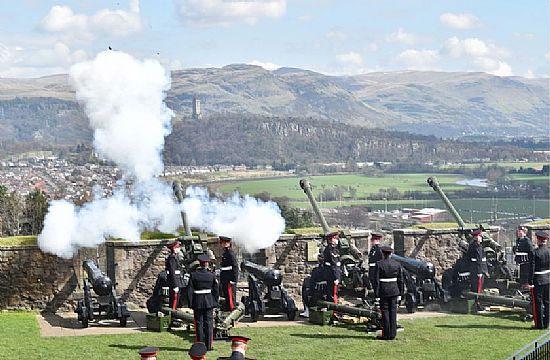
The Reserve Forces and Cadets Association for the Lowlands of Scotland are seen here firing northwards towards the Highland Boundary Fault Line. On this occasion, however, they are not firing in anger but as a salute for the H.M. The Queen’s 92nd birthday in April 2018
Secure in social status and with a guaranteed income from his various appointments to develop the estate, he retired to Ballindalloch in 1796 dying there on April 13th 1806 at the grand old age for the time of 86. Since James never married the responsibility for Ballindalloch passed to his sister’s family, the Macphersons who added Grant to their name to become Macpherson-Grants.
Further Reading:
The huge archive of Ballindalloch Papers can be accessed at the British Library
Add MS 25405-25412 and Add MS 25414-25415.
In the Library of Congress some of these are available on microfilm in the Manuscript Division
So far there have been two biographies published for General Grant.
Alastair Macpherson Grant :General James Grant of Ballindalloch: (privately published 1930)
P.D. Nelson: General James Grant: Scottish Soldier and Royal Governor of East Florida (University of Florida Press 1993)
The two books that place James Grant in his commercial context are:-
Douglas J. Hamilton: Scotland, the Caribbean and the Atlantic World 1750-1820 Manchester University Press 2010
David Hancock: Citizens of the World. Cambridge University Press 1995
Florida History Online has a number of fascinating and highly readable accounts of life during the period when it was a British Colony.
Amongst the many academic articles available via a library account that includes access to JSTOR I would single out the following:
Susan Schwartz: James Grant, British East Florida, and the Impending Imperial Crisis 1764-1771 in The Florida History Quarterly Winter 2015
Daniel C. Littlefield: Plantations, Paternalism and Profitability: Factors Affecting African Demography in the Old British Empire in The Journal of Southern History, Vol 47 No 2 May 1981.
Deborah L. Bauer: “…in a strange place…: The Experiences of British Women during the Colonization of East and West Florida. Florida Historical Quartlery Fall 2010 She highlights how James dealt with a potential scandal in the colony.
George C. Rogers Jr. The East Florida Society of London 1766-1767 : The Florida History Quarterly April 1976
An interesting article by Nikolaus Bottcher: Trade, War and Empire: British Merchants in Cuba,1762-1796 can be accessed simply by googling it.

